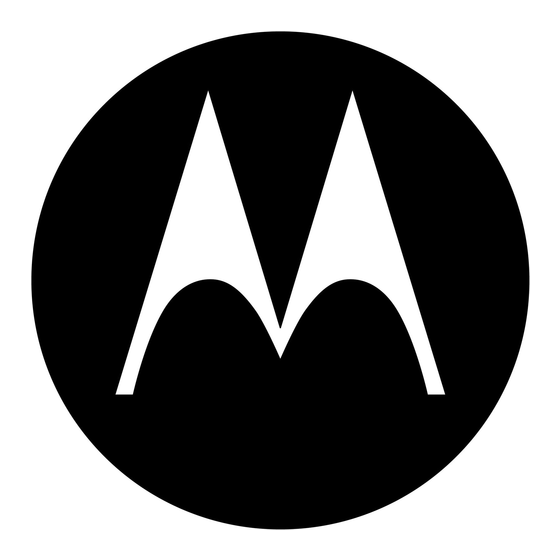Motorola LA-5137 Руководство по интеграции - Страница 13
Просмотреть онлайн или скачать pdf Руководство по интеграции для Модем Motorola LA-5137. Motorola LA-5137 45 страниц. Compact flash adapter
Также для Motorola LA-5137: Руководство пользователя (15 страниц)

The chipset used implements a dual band direct conversion transceiver supporting 2.4 GHz and 5 GHz bands.
The chipset uses Zero Intermediate Frequency (ZIF) architecture for the radio. The architecture contains low-
noise amplifiers, quad up/down converters, frequency synthesizers, low-pass filters, baseband AGC receiver
amplifiers, transmit/receive switches, and transmitter power amplifiers.
The 802.11 WLAN MAC protocol is implemented in firmware supporting BSS and IBSS operation. Low-level
protocol functions such as request to send (RTS)/clear to send (CTS) generation and acknowledgement,
fragmentation and de-fragmentation, and automatic beacon monitoring are handled without host
intervention.
3.1 Transmitter Path
After the Medium Access Controller (MAC) receives the data from the host computer through CF interface,
the MAC appends a preamble and header and sends the data to the Base-Band Processor (BBP).
The radio supports legacy and CCK data rates in 2.4GHz and the OFDM data modulation modes for both 2.4
GHz and 5 GHz bands.
The CCK mode transmitter is a Direct Sequence Spread Spectrum (DSSS) PSK modulator when in CCK mode
supporting 5.5 Mbps and 11 Mbps. It also supports DBPSK for 1 Mbps and DQPSK for 2 Mbps. The preamble
is always transmitted as the DBPSK waveform and the header can be configured as DBPSK or DQPSK while
the data packets can be DBPSK, DQPSK, or CCK.
The OFDM transmitter supports BPSK, QPSK, 16QAM or 64QAM modulation. The OFDM transmitter operates
in 2.4 GHz and 5 GHz bands providing 6, 9, 12, 18, 24, 36, 48, and 54 Mbps data rates. The OFDM signal is
fed to a pair of Digital to Analog Converters (DACs) to produce the In Phase (I) and the Quadrature (Q) signals.
The TX signals are then amplified by the PA and routed through the high-low band switch to the dual band
antenna for transmission.
3.2 Receive Path
The received signal from the antenna is fed to the diplexer, which separates the signal path for the low band
(2.4 GHz) and the high band (5 GHz). The signal is then fed to a filter/balun in the low band and to a balun in
the high band path. The signal then goes to the transceiver chip for direct down conversion for both low and
high bands. The design contains LNAs, Quad Up/Down Converters, Synthesizers, Low-Pass Filters, and
Baseband AGC Receiver Amplifiers.
